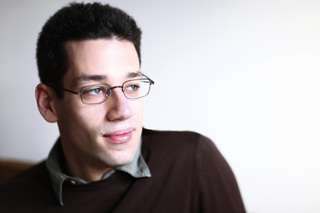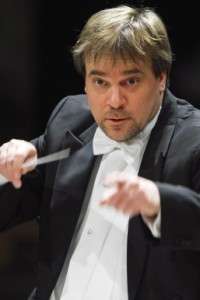|
Back
Bold, Brassy Finish to "Best of Brahms" Houston
Jones Hall
09/28/2012 - and September 30*, 2012
Johannes Brahms: Piano Concerto No. 2 in B-flat Major, Op. 83 – Symphony No. 3 in F Major, Op. 90
Jonathan Biss (piano)
Houston Symphony, John Storgårds (conductor) 
J. Biss (© Jamie Jung)
The Houston Symphony's "Best of Brahms" festival came to a bold, brassy conclusion, with repertoire that truly stands among the best of its composer's oeuvre. The orchestra's music director, Hans Graf, gave two mixed weeks prior to this: a fiery, dramatic First Symphony complemented by a stunning First Piano Concerto with Garrick Ohlsson, and a more idiosyncratic rendition of the German Requiem. To this, guest conductor John Storgårds offered yet another viewpoint of the composer, as one who took Beethoven's thunderous music brought to Houston (which this conductor earlier this year) and ran with it. This was no civilized and earnest Brahms, but a powerful, mighty force of music.
Jonathan Biss seemed unwilling (and, perhaps, technically unable) to match the searing intensity coming from the podium in the concerto. The pianist seemed intent on a more poetic slant, and in many moments of the concerto this worked quite well. Especially gorgeous was the third movement Andante, where Biss' mahogany tone was matched by principal cellist Brinton Averil Smith's yearning cello solos, all of it underpinned by velvety sounds from the orchestra's low strings. To this, Biss added an aching, crystalline ascent to the appoggiatura atop his first entry, and then stunningly executed trills and rises and falls in the central episode. There was certainly nothing wrong with Biss' interpretation of the work as a whole, but there were moments where the technical hurdles thrown at him by the composer overwhelmed the poetry. Even the first movement's opening cadenza felt vulnerable instead of confident, and in the second movement's trio, the sotto voce double octave passages, tossed off with hushed, vertiginous ease by pianists like Sviatoslav Richter and Leon Fleischer, saw the pianist fumbling for and dropping several notes. Conductor and pianist aligned most clearly in the finale, where both gave the the playfulness of the music was given full sail.
The orchestra played beautifully throughout the night, setting a bold tone in the concerto that continued through the Third Symphony. High octane sonorities from the brass were thrillingly secure and balanced by sensuously-played horn solos from the principal and third chairs in both works. Low brass produced the ideal, warm Brahms sound in the symphony's second and fourth movement chorales, returning in a blaze of glory at the finale's climax. The string seating, first and second violins seated together and double basses behind the cellos, was an excellent choice for this work, emphasizing the delicious density of Brahms' string voicing.

J. Storgårds (© Heikki Tuuli)
Storgårds exaggerated the contrasts in the symphony, at times to a fault. Taking the first movement's "con brio" indication to heart, he created a reading that focused on momentum rather than on long lines. The development section was especially tumultuous and the arrival at the recapitulation was given the heft of a Mahlerian Höhepunkt. In the middle movements, Storgårds pressed only slightly ahead of more conventional tempos. There were precious few moments that were allowed to linger, and we were left wanting more time to savor the finesse of the clarinet and horn contributions. The finale saw a return to a hasty tempo but, where the first movement succeeded as an inevitable cascade of energy, the finale often sounded hectic and scattered, most notably in the rapid-fire repartee of the closing theme, despite the exactitude of its execution. The evaporation of the coda, however, was touchingly rendered, and the final F major chord from the winds was perfectly in tune and balanced.
Marcus Karl Maroney
|